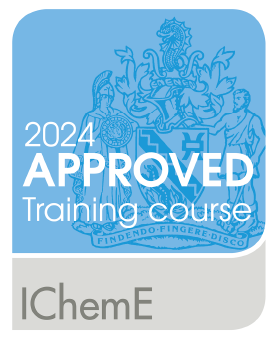

In short, Hazard Study 0 asks the question : ”Can the process be made inherently safer by changing for less hazardous materials or processes?” The aim of inherently safer design (ISD) is to make sure that even if things do go wrong, the process is still safe. An example of ISD is to make a vessel strong enough to withstand the highest pressure it could ever encounter, rather than protecting it in other ways such as by installing pressure relief.
Hazard Study 0 considers these inherent safety issues to see if safety can be improved at this early stage in design by, for example, using less toxic reactants, less flammable solvents, or equipment that is “safe by design”.
HS1 is best carried out when the basic process flow is known. (All that is needed is a block diagram showing the different processing steps. A full PFDProcess Flow Diagram is not required.) HS1 aims to identify the major hazards present, the main control measures required and the main health, safety and environmental legislation applicable to the project.

As can be seen from the diagram above, the early-stage hazard studies (HS0/1/2) make good economic sense as well as good safety sense, because it is still relatively cheap to make changes at this stage, compared with later in the design.

 HazOp Training for Leaders
HazOp Training for Leaders
For people who already have some experience of HazOp, and now want to go on to facilitate hazard study meetings.

 HazOp Training for Team Members
HazOp Training for Team Members
For anyone attending HazOp or other hazard study meetings as a team member.
Project to perform a Hazard Study 1 (HS1) for the proposed High Level Lancing (HLL) application at steel manuafacturing site. As an early-stage hazard study, HS1 describes the main hazards of the project, the main safety control measures required, and the next steps needed to implement the project safely (e.g. which subsequent hazard studies are required).
Industry: Mining / Metal / CementA "Hazard Study 1" review to determine safety issues associated with a change of recipe (a trial to test the use of a different solvent) in a chemical process. The study scope included hazards associated with the change to the new solvent and the change back to the existing solvent.
Industry: Chemical=Method conducted an informal review of the clients hazard study 1 documentation and suggested areas for improvement, working with the client to improve their processes for the future.
Industry: ChemicalA HS1 was carried out for a new abatement system which highlighted gaps in knowledge of hazards and raised actions to better understand the chemical processes and potential hazards involved.
Industry: Chemical=Method provided feedback on a HS1 completed by the client, suggesting areas of improvement.
Industry: Mining / Metal / Cement
You can contact =Method below:
p: +44 (0)1462 713313
E: support@methodprosafe.com. T: 44 (0)1462 713313. W: www.methodprosafe.com